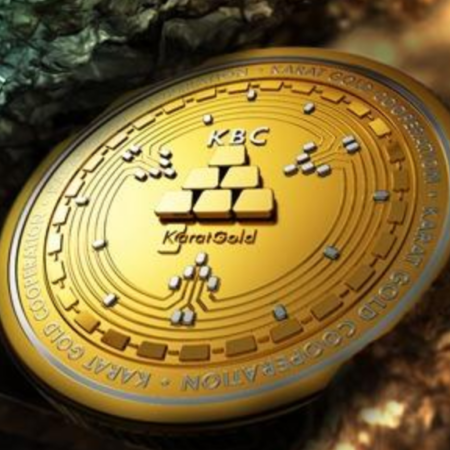Usually, when people ask this question, they likely mean which cryptocurrency to speculate on in terms of its market value.
However, there’s more ways to earn with cryptocurrencies than just speculation.

Cryptocurrencies have many different designs and so, they can also give you returns in different ways. I normally categorise coins in the following manner:
- Market value coins
- Interest rate coins
- Profit sharing coins
Depending on what you’re trying to achieve, the answer to which altcoin will give the best return also changes. Let’s have a closer look at what I mean.
Market Value Coins
This is the most common category of token investment. The main idea is to buy a token that is expected to rise in value and then either hodl or sell it at a profit.
Investors that concentrate on this category are most concerned with:
- Are people likely to be hyped about this token
- Does the altcoin project have a capable marketing team / strategy
- Does the altcoin have a large and dedicated community to pump its value
- When is the token is listed on (major) exchanges
- Fundamental and technical analysis
Most of the tokens in this category usually only have a promise or an idea for the investor. In better cases, the project may have an MVP (minimum viable product). In the best cases, the project already has a working product that you can use – but their price is likely to then already reflect that.
The tokens have functions in addition to market value of course, but they may not interest the investor at all. The biggest gains are usually made from undervalued altcoins that (thanks to the above) caught the speculation speed train. Hodlers are also hoping that the project solves a real life problem, so that the token remains useful and upon which they can speculate in the long term
Interest Rate Coins
A more wholesome way to earn revenue from cryptocurrencies is through investing in coins that give holders an interest rate for owning it.
This is also called staking or minting and it’s the form of mining used in Proof of Stake cryptocurrencies (read here, if you’d like to learn more). Staking is an environmentally friendlier and more cost-effective form of generating new tokens.
In addition to earning from the interest and market value of the token, the investor also serves the noble cause of securing the blockchain and activity of all its users through the staking.
Investors that concentrate on this category are most concerned with:
- What is the planned inflation rate of the cryptocurrency that forms the investor’s interest rate
- Does the token project solve a real life issue so that it will be needed
- Is the project capable of realising its goal
CLOAK, a privacy coin project from 2014, is a wonderful example of an investment of this type.

If the wallet containing CLOAK is staked into the service of their blockchain, the project rewards every single coin holder with 6% on their holdings per year.
This is possible, because CLOAK does not use Master Nodes, like most other Proof of Stake coins. Creating a blockchain without Master Nodes achieves a more fair and distributed blockchain that gives advantage to all its investors, big and small.
Compare that to DASH, where you need 1000 DASH to function as a Master Node. At current price, you only benefit, if you’re an early adopter or able to invest 1 million dollars.
There are even more gains, if your wallet secures Enigma transactions. The 1.8% charge taken from using Enigma’s extra layer of anonymity in transacting is divided amongst all participating nodes (wallets).
What is the planned inflation rate of the cryptocurrency that forms the investor’s interest rate
The interest rate serves an important function for Proof of Stake currencies. The interest rate in other words is also the planned inflation of the cryptocurrency or the amount of tokens by which the circulating supply grows each year.
CLOAK grows by 6% each year. Consequently, all of its investors that hold staked wallets also earn 6% on their amount of CLOAK.
It’s noteworthy to mention, that there are economists concerned of the deflationary nature of Bitcoin and other hard capped cryptocurrencies. It is widely accepted in economic schools of thought that, at least in the current economic system, that a deflationary currency would bring the growth of our economy to a halt. And cryptocurrencies with a hard cap include no planned “growth”, which is another way to say, no inflation (further discussion on the nature of this claim is out of the scope of this answer).
Investors concerned over this may find CLOAK very attractive, because the annual inflation in CLOAK unwittingly bridges this economic concern with cryptocurrencies. This inflation also supplies CLOAK’s attractive return of interest in addition to its market value that is many times higher than is possible through any other traditional investment product.
Does the token project solve a real life issue so that it will be needed
CLOAK is one of the few strongly privacy driven cryptocurrencies out there. And privacy is the last human right we have forgotten to fight for. As quoted by Edward Snowden:
“Arguing that you don’t care about the right to privacy because you have nothing to hide is no different than saying you don’t care about free speech because you have nothing to say”
Yet, freedom of speech is inarguably important to most of us while privacy is (relatively) willingly surrender.
Our privacy is being infringed by governments with the pretext that it’s necessary for our security. But data suggests government agents, like the NSA, have not achieved better security from restrained privacy.
I’m motivated to believe the case for privacy driven projects, like CLOAK, is actually quite strong. Check out this illustrative video on the topic with an extensive list of sources in the description worth reading on precisely this topic.
Is the project capable of realising its goal
When I first came across CLOAK, it ticked all the boxes I use in evaluating the long term sustainability of a cryptocurrency. Looking at the project and talking to some of the members, I was immediately drawn in by the tight and active community, strong developer team, purpose of the project and how well designed the project was.
Worth mentioning that the original team behind CLOAK has been replaced by a new one. After taking over the project, the new team found the previous code to be majorly flawed and incomplete. So they redesigned the original code and “built it up from scratch”. You can chat with the team members directly on their Telegram to find out more about the state of CLOAK today or check out the code, that was recently released as open source, on their Github.
In conclusion, CLOAK ticks the relevant boxes for being an exemplary cryptocurrency among Interest Rate Altcoins. It not only provides a good opportunity to earn, but also serves an important role in empowering citizens in the maintenance of civil liberty – one of the original goals of blockchain technology.
This is why I feel that Interest Rate coins could be a more wholesome way to invest in cryptocurrencies and are worth thinking about when you make your own investment decisions.
Profit Sharing Coins
This is the newest option to earn from cryptocurrencies. Cryptocurrencies in this category are designed to incentivise investors by sharing some of the profits of the project to its token holders. Think of them as loyalty programs or company shares that give you derivatives in addition to the market value of the token.
Investors that concentrate on this category are most concerned with:
- How big is the potential revenue capacity of the project
- Does the token project solve a real life issue so that it will be needed
- Does the altcoin project have a capable team to realise the project
KCS, the native token of the cryptocurrency exchange KuCoin, is an example of a good investment in this category.

If you own KuCoin, you own shares in the company, as stated in the ICO. So everyone that owns KCS is entitled to trading fee discounts as well as a portion of the revenue that the exchange makes from fees. The revenue divided between KuCoin holders is set at 50% of the fees.
KuCoin ticks the relevant boxes for being a great example of a Profit Sharing Altcoin project.
So, as you can see, there are a number of ways to earn from cryptocurrencies beyond simple speculation. Which category of coins are you most likely to invest in? Let me know in the comments.




